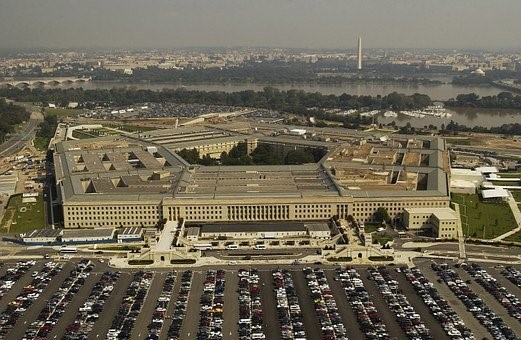The Department of Defense (DoD) has transmitted the classified 2022 National Defense Strategy (NDS) to Congress.
According to DoD, document sets out how the it will contribute to “advancing and safeguarding vital U.S. national interests – protecting the American people, expanding America’s prosperity, and realizing and defending our democratic values.
“The NDS is the capstone strategic guidance document for the Department of Defense. It translates national security priorities into guidance for military planning and activities. The 2022 NDS is consistent with the President’s Interim National Security Strategic Guidance, released in March 2021.“
An unclassified version of the NDS will be forthcoming. An official summary from DoD is presented here:
For the first time, the Department conducted its strategic reviews in a fully integrated way – incorporating the Nuclear Posture Review (NPR) and Missile Defense Review (MDR) in the NDS – ensuring tight linkages between our strategy and our resources. The unclassified NDS will be forthcoming.
Consistent with the President’s Interim National Security Strategic Guidance, the classified NDS sets out how the Department of Defense will contribute to advancing and safeguarding vital U.S. national interests – protecting the American people, expanding America’s prosperity, and realizing and defending our democratic values.
The Defense priorities are:
1. Defending the homeland, paced to the growing multi-domain threat posed by the PRC
2. Deterring strategic attacks against the United States, Allies, and partners
3. Deterring aggression, while being prepared to prevail in conflict when necessary, prioritizing the PRC challenge in the Indo-Pacific, then the Russia challenge in Europe 4. Building a resilient Joint Force and defense ecosystem.
The Department will act urgently to sustain and strengthen deterrence, with the People’s Republic of China (PRC) as our most consequential strategic competitor and the pacing challenge for the Department.
Changes in global climate and other dangerous transboundary threats, including pandemics, are transforming the context in which the Department operates. We will adapt to these challenges, which increasingly place pressure on the Joint Force and the systems that support it.
Recognizing growing kinetic and non-kinetic threats to the United States’ homeland from our strategic competitors, the Department will take necessary actions to increase resilience – our ability to withstand, fight through, and recover quickly from disruption.
Mutually-beneficial Alliances and partnerships are an enduring strength for the United States, and are critical to achieving our objectives, as the unified response to Russia’s further invasion of Ukraine has demonstrated. Answering this “call to action,” the Department will incorporate ally and partner perspectives, competencies, and advantages at every stage of defense planning.
The Department will advance our goals through three primary ways: integrated deterrence, campaigning, and actions that build enduring advantages.
• Integrated deterrence entails developing and combining our strengths to maximum effect, by working seamlessly across warfighting domains, theaters, the spectrum of conflict, other instruments of U.S. national power, and our unmatched network of Alliances and partnerships. Integrated deterrence is enabled by combat-credible forces, backstopped by a safe, secure, and effective nuclear deterrent.
- Campaigning will strengthen deterrence and enable us to gain advantages against the full range of competitors’ coercive actions. The United States will operate forces, synchronize broader Department efforts, and align Department activities with other instruments of national power, to undermine acute forms of competitor coercion, complicate competitors’ military preparations, and develop our own warfighting capabilities together with Allies and partners.
- Building enduring advantages for the future Joint Force involves undertaking reforms to accelerate force development, getting the technology we need more quickly, and making investments in the extraordinary people of the Department, who remain our most valuable resource.
The Department will develop, design, and manage our forces – linking our operational concepts and capabilities to achieve strategic objectives. This requires a Joint Force that is lethal, resilient, sustainable, survivable, agile, and responsive.
